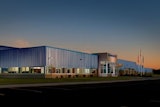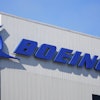
There are well-known compliance pressures to meet serialization legislation in the pharmaceutical industry. Add to that the pressures faced by producers competing with bio-similar products, headlines about the drop in new drug approvals in 2016, and you’d think the industry is in retreat and decline.
My experience, from speaking with customers, analysts and those in the know, however, paints a different picture. In fact, at a recent life sciences summit for leading pharmaceutical companies in the Nordic region, we found that the mood is buoyant despite the headwinds and that pharma is entering a truly exciting time. I’d like to highlight some great trends and insights shared at that event by Alex Severin, corporate vice president, global best practice at NNE.
A Move Towards Continuous Manufacturing
Continuous manufacturing offers great benefits of scale, but has traditionally been the preserve of large manufacturers, and variations in the process, such as powder flow, make it difficult to achieve a consistent output, which means a narrow quality control window for saleable output. However, with active control strategies built on technologies that are able to automatically adjust the process according to disturbances, producers are unlocking new levels of efficiency.
A Trend Towards Outsourcing
The whole shape of the supply chain is changing. Outsourcing to a contract manufacturing organization (CMO) can offer huge benefits and lower the barrier to market for new drug developers undertaking the journey to efficient Connected Enterprise technologies. The intelligent, real-time orchestration and optimization of business, physical and digital processes within factories and across the entire value chain is now a reality.
Virtual Technologies
Augmented reality and advances in mobility offer a huge benefit for pharmaceutical companies. From visualization technologies that will allow for remote engineering, maintenance and training to the transfer of standard operating procedures the potential of virtual technologies is starting to unfold in the marketplace.
Barrier Technologies
Another area opening up from more intelligent control systems is barrier technologies –humans are the main cause of contamination in aseptic product manufacture and the trend shows a move from clean rooms to Restricted Access Barrier Systems (RABS) and now into isolator technologies. For example, new filling lines being employed by some of the most advanced companies use isolator technology as a standard, and the trend is well set to continue.
Ready to Use Packaging
Staying with packaging, so called ready-to-use (RTU) packaging technologies are becoming more appealing, particularly in the light of decreased batch sizes and the need for higher production flexibility. The RTU industry is well aware of this and is helping customers achieve “fill and finish” efficiencies. With new packaging becoming available and all the main filling machine suppliers launching or planning the launch of low/medium speed RTU filling machines, this technology is becoming available to more and more manufacturers.
Robots
With a year-over-year growth rate of around 15 percent, industrial robots have been a trend for some time – and one that shows no sign of slowing up. As the capabilities of connected control technologies and the systems employed to manage them continue on an upward curve, the functions and uses of robots with continue to grow.
Taken in line with the barrier technology trend in aseptic production, robots have a very simple advantage - they emit almost no viable and non-viable particles. Add to that increased capabilities for fill and finish applications – another of our key trends here – and it’s easy to see why the adoption of robotics is a trend that continues at pace.
As these trends mature, it’s clear the pharmaceutical industry is in the midst of rapid developmental changes as it adapts to service a changing and expanding market. For those companies leveraging the technology now available, and with an eye on the burgeoning consumer health technology market, the opportunity is huge.
It’s easy to see why a buoyant mood prevails.
If you want to join in our discussion, feel free to reach out to me. This article was originally published here.























